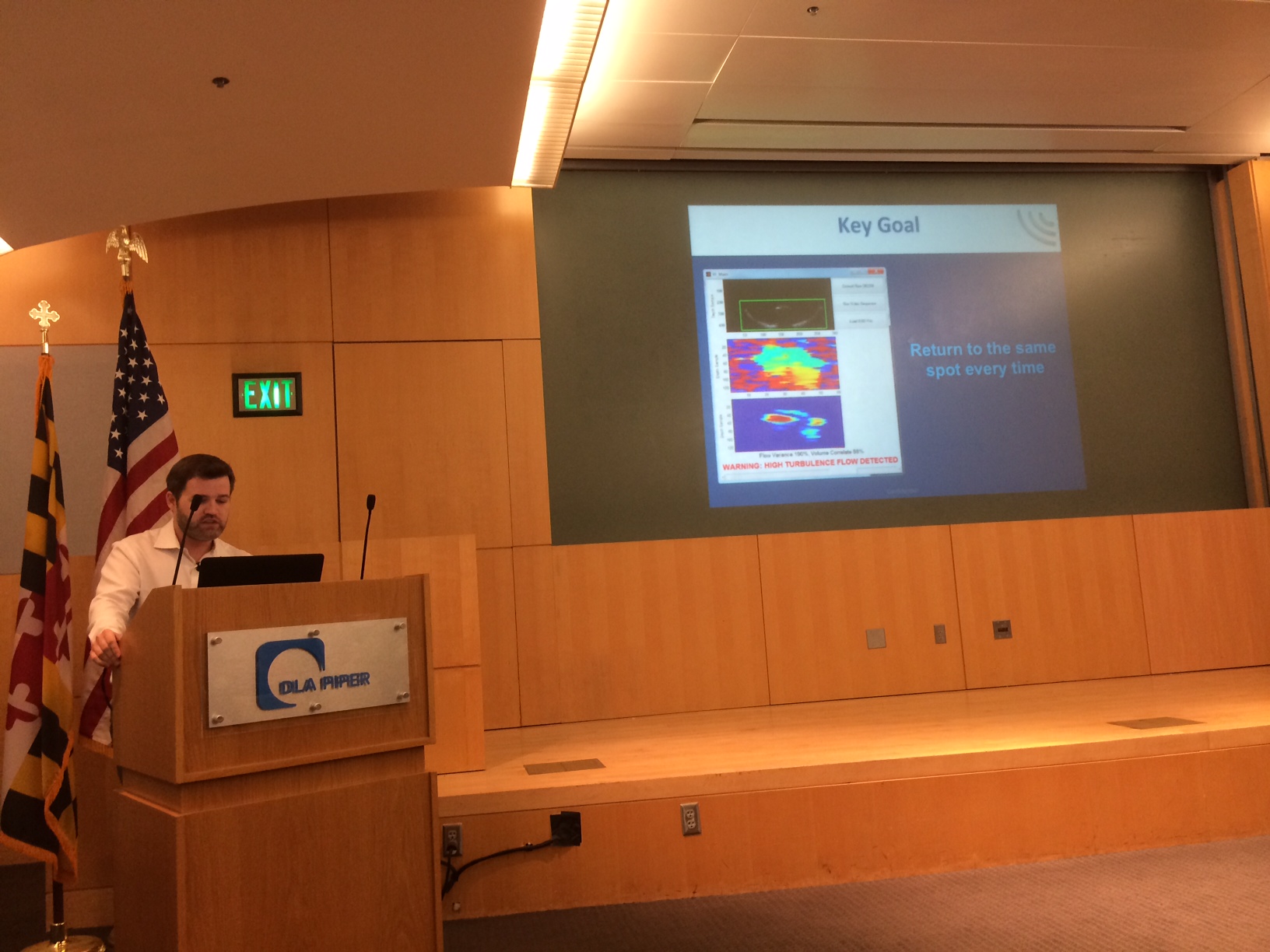
The workshop where most of OLIN’s landscape architects work. OLIN’s offices are on Independence Mall.
Architecture firm OLIN is known for big name projects like the revitalization of Bryant Park in Manhattan, the landscape of the Washington Monument in Washington, D.C. and the master plan for the Central Delaware River Waterfront in Philadelphia.
But here’s a lesser known fact about the Philly company that’s been around since 1976: it’s a team of modern-day hackers.
OLIN’s designers work on landscapes, instead of buildings, but they often have to use software made for traditional architects since that’s the industry standard. The solution? They hack the software so it can work for them, says OLIN’s Director of Technology Chris Hanley.
“We’re not going to let the tool dictate our design,” Hanley says.
His team studies developer languages like Python and Rhinoscript so it can adapt — or, hack — the design software to its needs.

The library at OLIN, which holds papers written by OLIN designers and partners. OLIN also has a digital version of a company library called the KnowledgeBase.
Named to the position seven years ago, Hanley is OLIN’s first Director of Technology. When he first joined the firm, Hanley says some people were up front about not being tech-savvy (they’re “self-proclaimed Luddites,” as Hanley put it).
“But they recognized the value of technology,” he says, and that empowers people at OLIN who are more tech-oriented, like him. [Updated, see below]
Today, Hanley calls OLIN a technology leader in its field. Here are three other ways the firm is making that happen:
- It has its own company wiki. Built roughly three years ago, the KnowledgeBase is the company’s digital go-to resource for its some 87 staffers. It’s an effort to store and share all the firm’s expertise, Hanley says. The KnowledgeBase, which is currently only for company use, offers video tutorials, articles on relevant topics and links to related OLIN projects. Hanley says he hasn’t heard of any other architecture firms with a database like this, though other firms have expressed interest in it. OLIN is considering offering subscriptions to the KnowledgeBase.
- It’s focused on teaching its designers about new technology. OLIN holds regular educational seminars, which often focus on new design tools. “It’s impossible to expect every designer to know every tool,” Hanley says, but this way, OLIN can have resident experts on different tools. That’s how OLIN keeps up with the quickly changing architecture technology scene, Hanley says.
- It’s looking to the future. Today’s design software can be limiting, Hanley says, if only because collaboration between firms means that every designer needs to work with the same type of software. There’s no universal language of design software, so to speak. But OLIN is part of a national advisory board led by Gehry Technologies that’s thinking about what a design software “translator” would look like, Hanley says.
Updated 2:30 10/17/12 to add more context to a quote about some OLIN staffers not being tech-savvy.
Before you go...
Please consider supporting Technical.ly to keep our independent journalism strong. Unlike most business-focused media outlets, we don’t have a paywall. Instead, we count on your personal and organizational support.
Join our growing Slack community
Join 5,000 tech professionals and entrepreneurs in our community Slack today!

Nonprofits are training AI chatbot ‘employees’ to take over tasks that cause burnout and stress

Supreme Court upholds TikTok ban, as creators and communities brace for impact

I’m a teenager who quit social media — and I’ve never been happier


